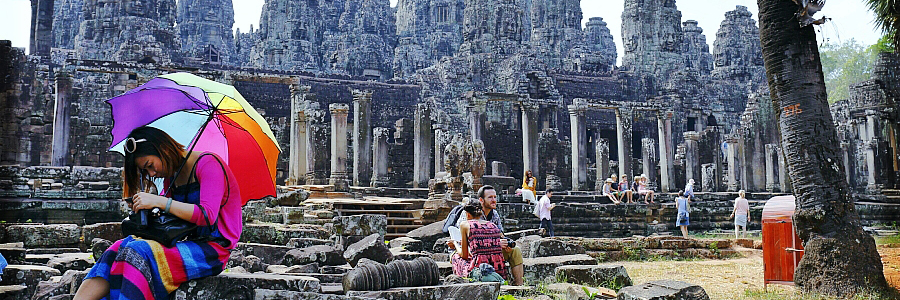Tourism, gender and climate change
Tourism is one of the world's most important industries. For countries in the Global South it is also one of the main generators of income. In the last few decades, the tourism industry has grown significantly and, as a labour intensive industry, has given rise to a multitude of new employment opportunities. On the other hand, however, the huge infrastructural and resource demands of tourism can have severe impacts upon local communities and the environment if they are not properly managed.
Climate-related impacts of tourism include transport (road, air and train travel), high per capita consumption of water and energy, and effects on flora and fauna. Problems with waste, as well as rising food prices in tourism destinations, are also serious issues. Major changes in the pattern of demand in the tourism sector, including a loss of demand for a given destination or type of destination, may well lead to increases in demand for alternative destinations. Changes in travel destinations will affect the economic, social and ecological situation in both current and emerging destinations.
Economic impacts will probably include less income as destinations degrade, tourism decreases, and tourism-related services and travelling become more expensive. These impacts will minimize employment and self-employment opportunities.
Social impacts of climate change on tourism will presumably include migration away from previous destination areas and migration towards new regions.
Environmental impacts of climate change on tourism will probably include negative effects on natural attractions. The natural characteristics of some destinations may become unattractive to tourists through environmental degradation, while an increasing number and severity of extreme weather events may make destinations unsafe and therefore unappealing to tourists.
Gender dimensions
There are numerous significant linkages between tourism and gender. Gender aspects affect women’s employment in tourism, women’s participation in planning and management, gender roles, women’s rights and sexual objectification just as migration.
Child labour is a well-known problem in the tourism sector and affects both girls and boys. Girls are additionally impacted by the risk of sexual harassment and abuse. In many tourism destinations, spreading prostitution has caused an increase in severe and often life-threatening diseases, in particular for women. Prostitution often coincides with abuse and violence against women, and can have severe consequences for social integration.
Where women were not members of the paid workforce before tourism was established at a destination area, their entering the workforce can cause changes in family structures, as the economic balance in the family shifts. The working conditions for unskilled employees, who are mostly women and children, are mostly sub-standard. Additionally, the time spent undertaking paid work often collides with women’s responsibilities for family and home. Women also receive significantly lower wages than men, as many studies have pointed out.
Tourism also impacts those people in destination areas who are not directly involved in the sector. Existing research shows that the production and consumption of fresh water, food, fuel, land use and transport are gender-specific responsibilities. Due to their comparative lack of financial resources and role as a provider of food, water and energy, women may be hit harder than men by increasing food, water or energy prices.
Response
There is an absence of gender-disaggregated information for the tourism sector. In the context of climate change, it will be important to address the impact of decreasing tourism in specific destinations. Linkages with other sectors, such as agriculture, health and education, will further understanding about the complexity of impacts on women's lives.
Opportunities to use tourism development to further gender equity should be used, while any discrimination of women through the course of tourism development should be avoided. Participatory strategies of tourism planning and development, including gender sensitive indicators, are key to achieving these goals.
Women’s organisations, consumer associations, tourism companies, media and marketing experts should cooperate in developing tools for raising consumer awareness about the climate-related impacts of travel and tourism, especially on women.
To achieve the aim of reducing GHG emissions caused by travelling, it is important to undertake research related to the travellers themselves. Who travels, for which purpose, and how? Do women and men make different choices when travelling?

